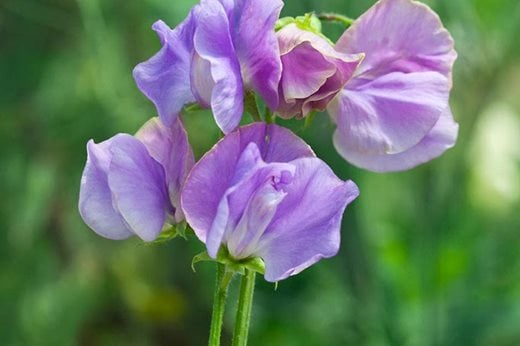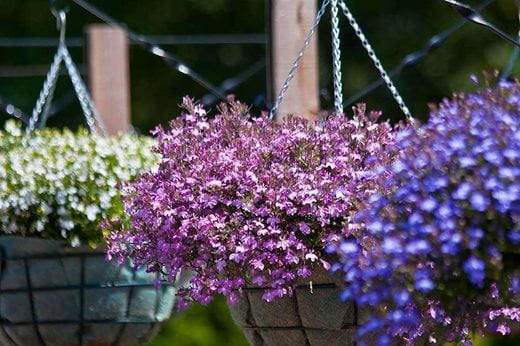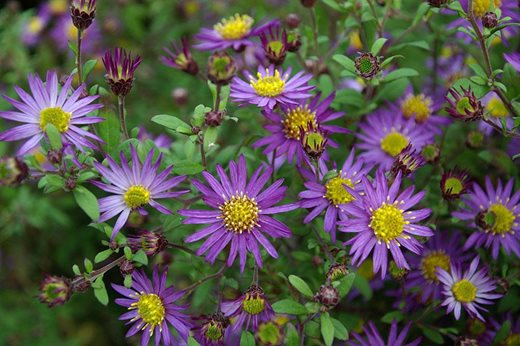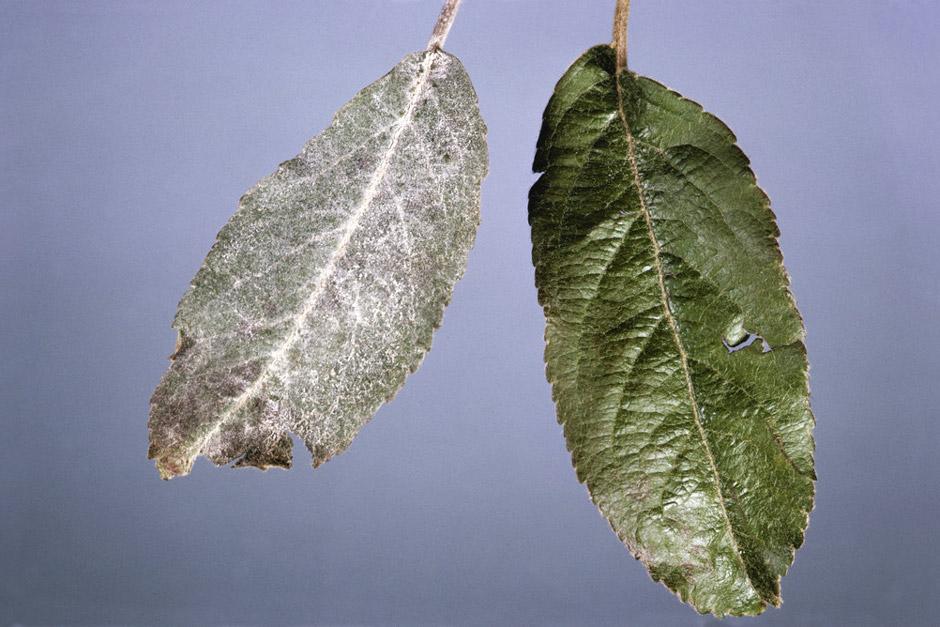 Sowing and planting
Sowing and planting
Spring-flowering bulbs are now available in garden centres and online. Buy early for the best choice and begin planting.
Sow sweet peas in a cold frame or the greenhouse for early summer blooms next year.
Sow other hardy annuals, e.g. Ammi, larkspur, pot marigolds, cornflowers, poached egg plant and poppies, direct where they are to flower.
If you sowed any spring-flowering biennials such as pansies, honesty, foxgloves, verbascums or wallflowers, earlier in the summer, they will now need planting out.
This is a good time of year to plant new perennials, especially towards the end of September, as the soil is still warm, but moisture levels are increasing.
 Cutting back, pruning and dividing
Cutting back, pruning and dividing
Don’t neglect hanging basket maintenance – a little deadheading, watering and applying liquid seaweed feed can keep them going until mid-autumn. Once they are past their best, re-plant as winter/spring hanging baskets with spring-flowering bulbs and plants, winter-flowering heathers and trailing ivies.
Continue to deadhead plants such as dahlias, delphiniums, roses and penstemons to prolong the display and give colour well into the month.
Leave the cutting back of perennials until late winter to provide habitat for wildlife. However any plant stems that have collapsed and turned mushy can be added to the compost heap.
Now is a good time to divide any overgrown or tired-looking clumps of herbaceous perennials such as Helenium or hardy geranium. This will invigorate them, and improve flowering and overall shape for next year.
 Propagation
Propagation
Take cuttings of tender perennials, such as Pelargonium and Osteospermum. These plants often do better grown from new cuttings each year. If you do not have a greenhouse, then use a light windowsill to grow them on.
Continue collecting and storing seed from annuals and perennials still forming seedheads.
 General maintenance
General maintenance
In colder areas, bring inside any tender perennials, such as fuchsias, gazanias, lantanas and abutilons, before frosts cause damage. Keep an eye on night-time temperatures on the weather forecast – below 4°C indicates that a ground frost is possible.
Some tall late-flowering perennials, such as asters, may still need staking to stop them being blown over in the wind.
 Problems
Problems
Powdery mildew can still be a problem in a dry and warm September. Keep plants moist by watering at the base and avoiding foliage.
Inspect chrysanthemums for signs of white rust. Remove and dispose of affected leaves in the council green waste collection.
Check plants susceptible to vine weevil damage such as primroses and succulents. Look out for symptoms like dieback and eaten roots. Repot in fresh peat-free compost or use biological controls.

